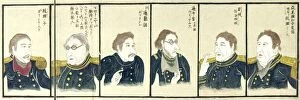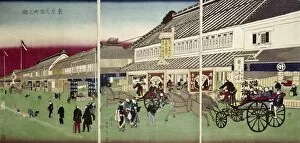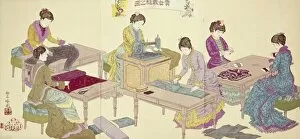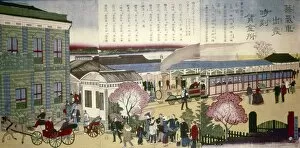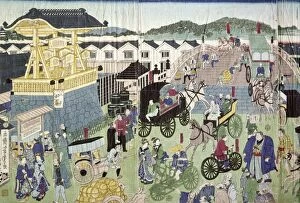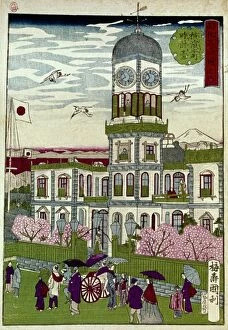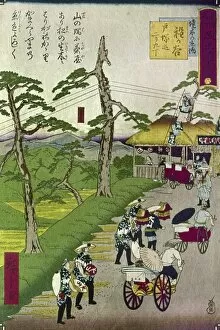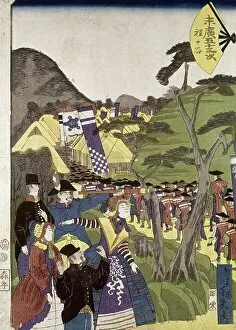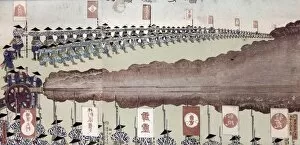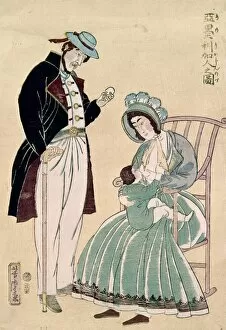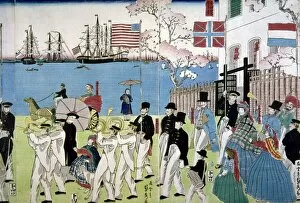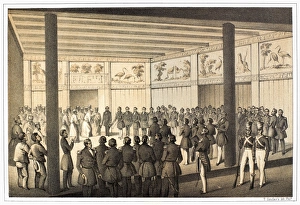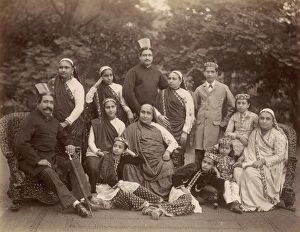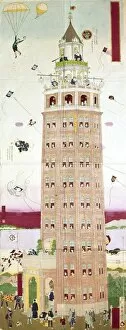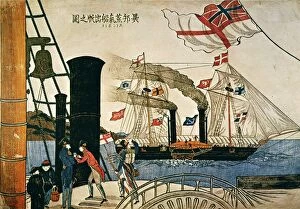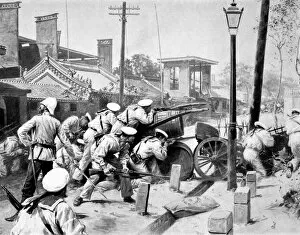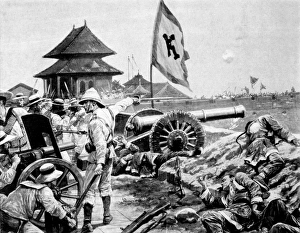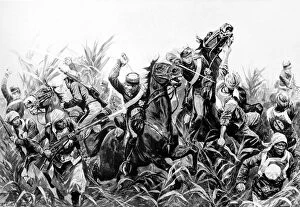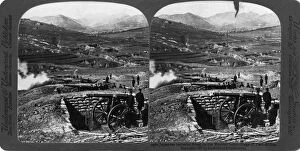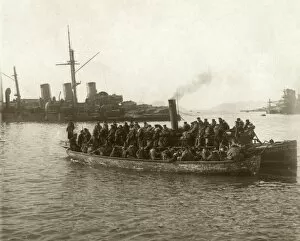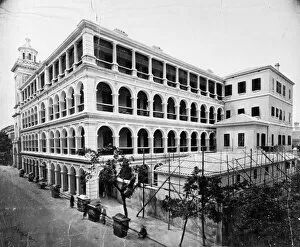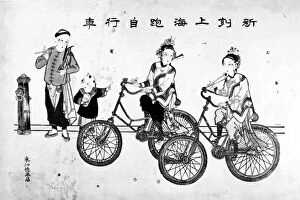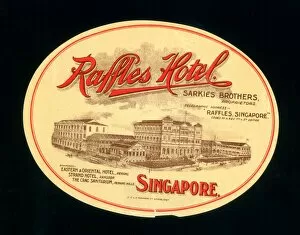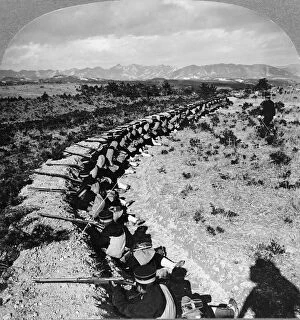Westernization Collection (page 5)
"Westernization: A Journey of Cultural Transformation" In the late 19th and early 20th centuries, Japan found itself at a crossroads, torn between tradition and progress
All Professionally Made to Order for Quick Shipping
"Westernization: A Journey of Cultural Transformation" In the late 19th and early 20th centuries, Japan found itself at a crossroads, torn between tradition and progress. The woodcut by Kiyochika Kobayashi depicts a powerful metaphor of this struggle, with a whale representing Western influence devouring three fish symbolizing Japan's sailors. It captures the impact of Western ideas on Japanese society during this transformative era. The Boxer Rebellion in 1900 marked another significant moment in Japan's path towards modernization. British and Japanese troops joined forces to confront the Boxers in Tianjin, showcasing their growing military prowess as they engaged in battle together. This collaboration reflected Japan's increasing alignment with Western powers. Ueno Park became an emblematic stage for change during the Second National Industrial Exhibition of 1881. Woodblock prints from that time vividly depict the exhibition's grandeur, highlighting technological advancements brought about by embracing Western industrial practices. These displays showcased Japan's determination to catch up with its Western counterparts. Emperor Mutsuhito played a crucial role in guiding his nation through these tumultuous times. As depicted in historical imagery, he personally handed flags to his troops—a symbolic gesture representing unity and loyalty towards embracing Western ideals while preserving Japanese traditions. However, not all views were supportive of this transformational journey. American cartoonist D. R Fitzpatrick captured concerns over Japan's expansionism into Asia through his piece "Piece by Piece. " It foreshadowed the second Sino-Japanese War while reflecting anxieties surrounding territorial ambitions fueled by adopting Western ways. Meanwhile, China also experienced its own clash with modernity during the Boxer Rebellion when Japanese troops burst through gates to engage their opponents head-on—an event that further highlighted how different nations grappled with similar challenges posed by globalization. The Russo-Japanese War of 1905 proved pivotal for both countries involved; it was fought fiercely until President Theodore Roosevelt's peacemaking efforts brought about an end.



